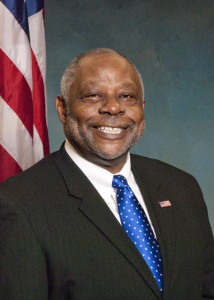FAA’s Next Gen System experiences turbulence with interoperability
Industry stakeholders told the Government Accountability Office they are concerned about global interoperability with the Next Generation Air Transportation Sys...
The path to implementing the Next Generation Air Transportation System hit some turbulence.
Seventeen of 25 industry stakeholders told the Government Accountability Office they are concerned about global interoperability, and how those efforts could be subject to further delays because modernization efforts have been hampered by constrained resources.

In the report, GAO found the Federal Aviation Administration lacks mechanisms to identify, prioritize and assess interoperability risks, and has yet to run a threat assessment despite having a plan to do so.
Gerald Dillingham, director of physical infrastructure issues at GAO, said in an interview on the Federal Drive with Tom Temin that although FAA has a global strategy in place, it needs “a comprehensive enterprise level risk assessment plan” for mitigating interoperability risks.
“As they [pilots] are crossing national borders and flying in a global airspace, they would want to be able to communicate and navigate to avoid any kind of potential collision or just to make the system more efficient,” Dillingham said. “Currently, the systems are interoperable and they do work together very well. … We’re at a place where we need to make sure they are continuing to be interoperable as they develop.”
A primary concern with interoperability is the shift from radar-based navigation to GPS satellite systems. Dillingham said the shift to GPS navigation will likely boom over the next decade, and it’s that transitional period that has industry stakeholders concerned.
“The radars are in fact working together, but as we move toward a GPS-based, satellite-based system, there will need to be much more interoperability and cooperation among the nations,” he said. “All of us are concerned with interoperability because it is a global enterprise and it needs to work on a global basis.”
Despite concerns over transition, Dillingham said there’s no danger from radar and GPS communication mix-ups.
“Nations are working together to ensure that when the systems are in place and ready to be operable, everyone will be ready to engage in the next gen type systems,” He said. “That’s the real purpose of coordination and cooperation with other countries. You keep in touch with each other, you share information and lessons learned … to come to that one end of a new and modernized system.”
Dillingham said the U.S. is one of the current leaders in air traffic control but is “in the middle of the pack” when it comes to transitioning its technologies.
Dillingham said the U.S. is right on track when it comes to developing technologies for the Next Generation Air Transportation System, and is transitioning toward using new tools in the future.
“We’re now at the process of implementation moving past design and planning,” Dillingham said. “There are several parts of the U.S. in which next gen capabilities have been implemented or are being tested, and at the same time, there are international tests of air traffic control systems taking place with Europe and other countries.”
Despite the setbacks found in the report, Dillingham said the FAA is heading in the right direction since it’s agreed to move forward and implement GAO’s recommendations.
“I think its on an upward trajectory,” he said.
Copyright © 2024 Federal News Network. All rights reserved. This website is not intended for users located within the European Economic Area.




